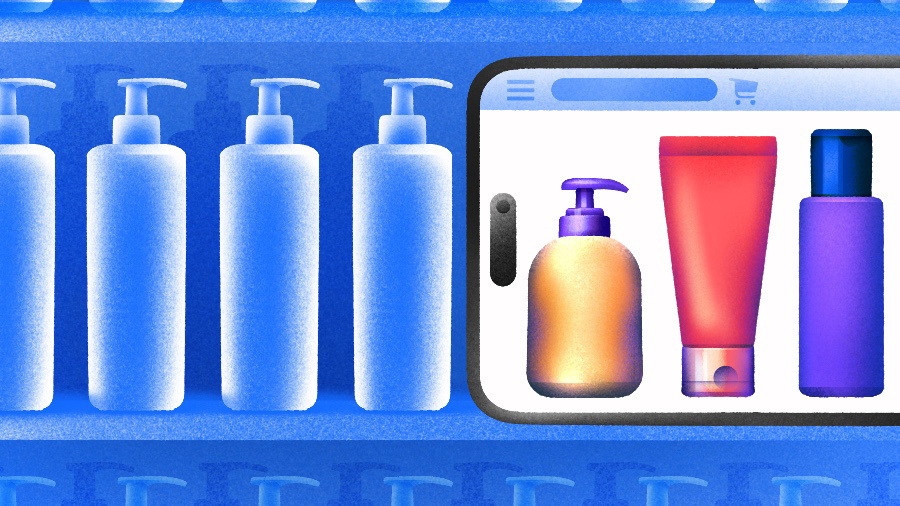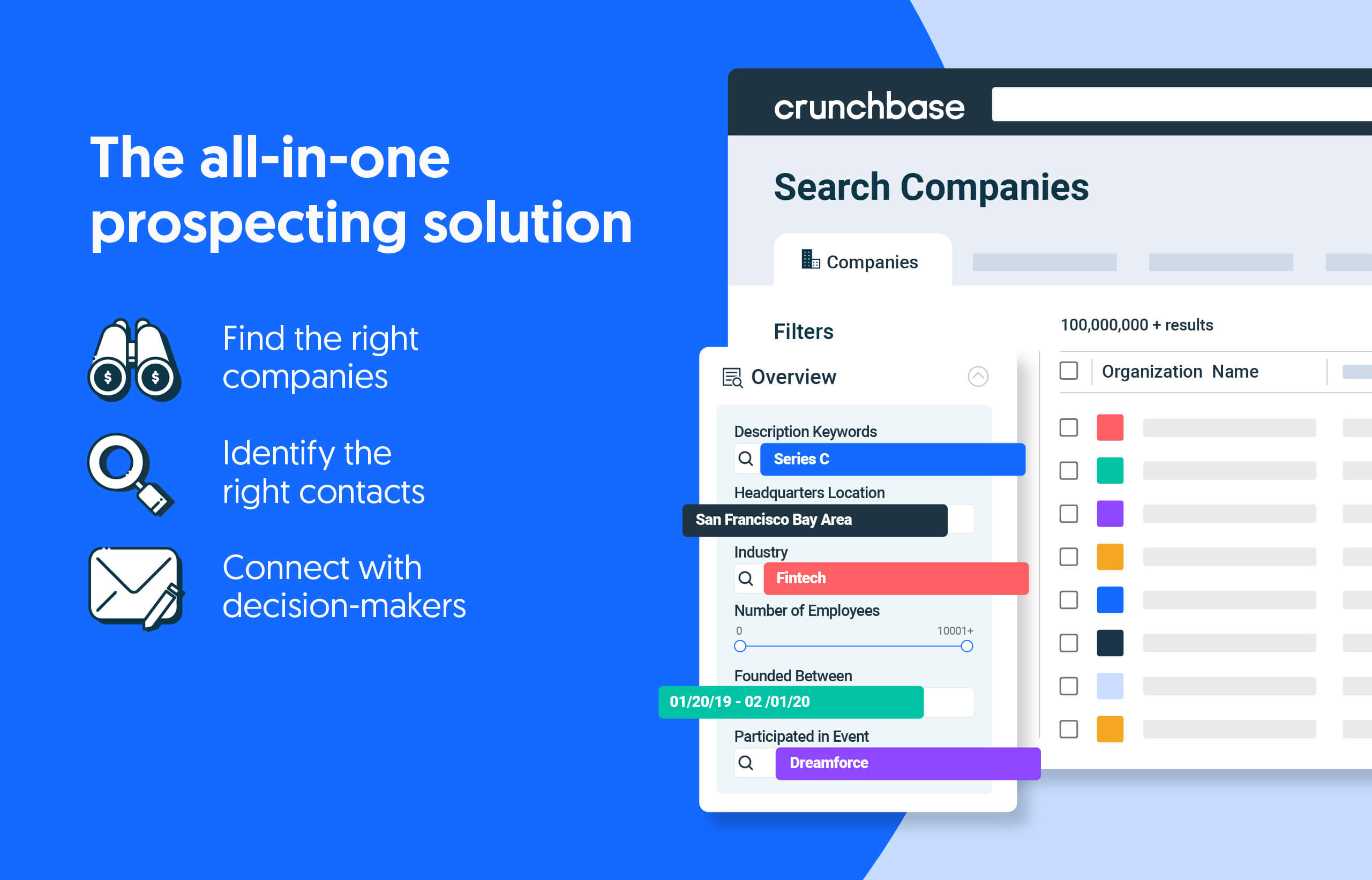The sexual health aisle at CVS is getting an update: Among condom boxes, pregnancy tests and vaginal hygiene products sitting in packaging that hasn’t been updated since the early ’90s is something fresh; bright bottles of lubricants with cheeky names like Tush Cush or So-Low Lotion.
Tush Cush and So-Low Lotion are just a tiny slice of the lubricants made by Cake, a 2-year-old sex health startup that began as a niche, direct-to-consumer brand and now finds itself in one of the largest drug stores in the country.
CVS isn’t the only one embracing this upgrade: Sephora, Nordstrom and Bloomingdale’s began stocking up on vibrators as sales of sex-related products blew up during the pandemic. That’s thanks to an increased cultural shift that embraced sexual pleasure as a crucial component of physical and mental health.
Search less. Close more.
Grow your revenue with all-in-one prospecting solutions powered by the leader in private-company data.
Niche, direct-to-consumer sex startups are quickly entering the mainstream and gaining favor with big retailers and consumers. But venture funding in the space has been volatile at best, as shown below:
The space peaked in 2016 at $372 million when direct-to-consumer was a huge category for success. But the years after were plagued with inconsistent funding numbers. While venture funding for sex-focused consumer packaged goods netted $133 million in 2021, that number has fallen to $52 million so far in 2022.
“People have sex in different ways and people think about sexual health and wellness in different ways,” said Caitlin Strandberg, an investor at Lerer Hippeau. “And so you need to have a different type of product, not just for one person, but for every type of potential consumer, and do it in a way that makes it fun and accessible.”
But first, some history
Before Facebook and other social media platforms became the advertiser behemoths they are now, marketing online was an easy task for companies that, by necessity, needed to be digitally native in the absence of retail approval. An early wave of direct-to-consumer startups such as Harry’s razors and quip toothbrushes found success in targeted online ads, aestheticizing the most mundane parts of human hygiene by ejecting a sense of luxury and purpose into essential tasks.
Those targeted ads quickly garnered cult followings online and translated into retail. Brands known for their supraliminal, ritualistic messaging suddenly could be found next to mouthwash and deodorant, and at a cheaper price. The deal allowed retail to remain fresh and relevant for young consumers while brands opened the gates to new audiences.
“Direct-to-consumer only was a very hot investing category in a marketing channel,” said Strandberg, whose firm invested in Cake, Casper mattresses and other DTC brands. “There was a moment of time, and there were people that could arbitrage that effectively, and that moment of time kind of closed.”
Consumer packaged goods startups today face a much different reality. Thanks to changes in social media algorithms, the growing expense of ad space, and the competitive DTC landscape, companies are now having a harder time capturing their audience and leading them through the funnel to turn them into a loyal customer. Apple also rolled out an iOS update on its phones, making it harder for marketers to track users and collect breadcrumbs of highly personalized information.
“It’s just harder to target people,” said Frances Tang, CEO of consumer-focused sexual wellness startup Awkward Essentials. “And it costs more to acquire them because you’re not able to target as exactly as you used to previously.”
But the strategy paved by digital-native startups like Harry’s is getting harder to replicate, especially in the sexual wellness space where innovations go far beyond what currently exists in the market.
Challenges to DTC and big-box retail
When Tang started Awkward Essentials, there wasn’t a product on the market quite like hers.
Her company’s flagship product, the Dripstick, was focused on after-sex semen cleanup.
Tang’s strategy, at first, was to get in at retail stores. But because of the unique nature of the product, and after educating people on what it did, that quickly changed. The company began pivoting to sex stores and adult spaces.
“In a location like that, a customer is more willing to ask questions, whereas you walk into a Target and they’re not even going to help you to figure out what toaster to buy,” she said.
But sex-related startups also face major problems in online marketing. You can’t market sex on social media, making it hard for startups in the space to educate potential customers on their products. And as the category fundamentally changes by opening the door for specific products as opposed to one-size-fits all lubricants, it can be hard to explain to a potential customer why they’re important.
“Even if there are things you don’t know or you’re learning more about particular things, [companies] educate their customers in a really compelling way,” Strandberg said.
The omnichannel strategy
When Hunter Morris and Mitch Orkis started Cake in 2020, the goal was to move away from sexual wellness products that appealed to the lowest common denominator in consumers and move towards niche, situation-based sex products. The company introduced a slew of lubricants for almost every kind of sex act you’d want one for, and then moved on to vibrators and condoms.
Cake was direct-to-consumer, pumping money into marketing strategies that would net them loyal customers who return to the website to buy their products. It landed an $8 million Series A funding round in September, garnering more than $16 million in funding total, and entering retail with deals at CVS, Urban Outfitters’ online shop and Thrive Market.
This “omnichannel strategy” has been gaining traction. Direct-to-consumer is most likely to deliver loyal, frequent customers and a higher profit margin. Others may stumble across it on Amazon or in specialty health and wellness stores. And big-box retailers provide the most bang for your buck.
“When founders and good marketers understand how to leverage the channels to drive acquisition and to drive sales, that’s always important to me,” said Melinda Moore, an adviser at Coyote Ventures, who is focused on women’s health and wellness.
But omnichannel is a capital-intensive strategy. It requires strong marketing to penetrate the right markets, finesse social media and e-commerce algorithms, and translate new customers into loyal ones. All without forgetting already-loyal customers.
“There’s an entire set of challenges and solutions and problems that every brand will face in kind of transitioning from direct to consumer toward retail,” said Morris.
He’s right. Shipping a couple bottles of lubricant to someone’s door is a much different logistical hassle than shipping cases to a warehouse. Customer acquisition with a direct-to-consumer strategy can be hard, but it pays in a breadth of detailed customer data.
In retail, products sell at a lower price but can be sold faster. And marketing strategies have to shift with it: Do startups direct users to their website or to brick-and-mortar stores?
“It comes down to: Do you have the resources to support omnichannel?” Moore said. “If you’re super, super early stage and you have a million or $2 million, it doesn’t make sense to be omnichannel because you’re not going to be able to pay attention to it and to be able to support it.”
But to curry favor with investors, brands in sexual health need to appeal to a variety of consumers in order to succeed.
“I don’t necessarily see businesses as DTC businesses or retail businesses,” Morris said. “I see it as being: How do you remove the most friction from a user purchasing from your company? How do we make it a really easy shopping experience for the consumers we want to be in front of?”
Illustration: Dom Guzman

Stay up to date with recent funding rounds, acquisitions, and more with the Crunchbase Daily.





![M&A - Illustration of a magnet attracting various products. [Dom Guzman]](https://news.crunchbase.com/wp-content/uploads/mergers_and_acquisitions-470x352.jpg)
![Illustration of a guy watering plants with a blocked hose - Global [Dom Guzman]](https://news.crunchbase.com/wp-content/uploads/quarterly-global-3-300x168.jpg)
67.1K Followers